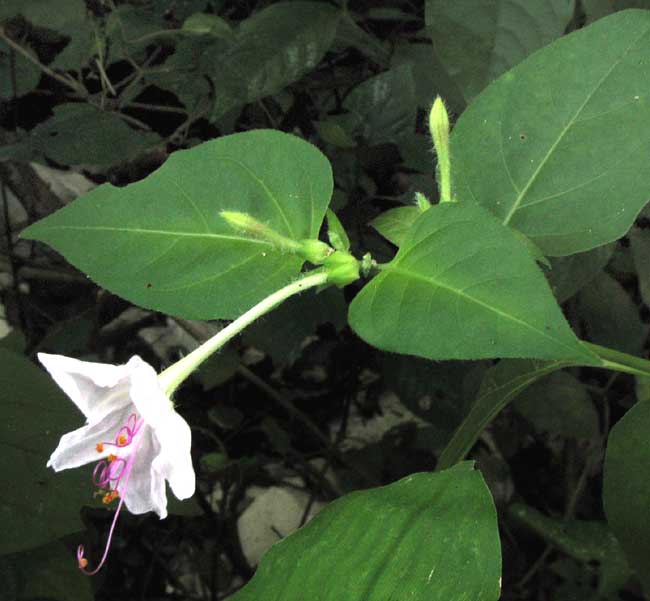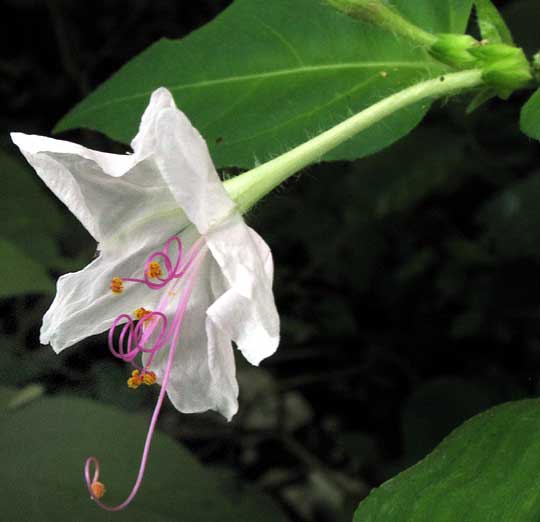Excerpts from Jim Conrad's
Naturalist Newsletter

from the September 19, 2010 Newsletter issued from Hacienda Chichen Resort beside Chichén Itzá Ruins, central Yucatán, MÉXICO; limestone bedrock, elevation ~39m (~128ft), ~N20.676°, ~W88.569°
WHITE FOUR-O'CLOCKS FLOWERING
Here and there in moist, shaded spots at woods edges and along trails there's a lanky, waist-high herb with slender, white, four-inch-long (10 cm) blossoms that open at dusk and wither the following dawn, just like Northern garden Four-O'Clocks. In fact, the herbage is very similar to that of normal Four-O'Clocks, and the flowers have similar structure, except that they're longer, narrower, and white. Since Northern garden Four-O'Clocks, Mirabilis jalapa, are native to Mexico, the first thing I figured that this fragile-looking wildflower might be a different species of the genus Mirabilis. See what you think in the picture shown above.
A closer look at the flower better showing the stamens' purplish, remarkably curling filaments is below:

This is indeed a different species of the four-o'clock genus Mirabilis. It's MIRABILIS LONGIFLORA. Distribution accounts I find say that it's native to much of Mexico and a little of the contiguous US, but not to the Yucatán. Apparently it's been introduced into Europe where it escapes into the wild, so maybe years ago it was grown in our garden area and now is escaping here. Or maybe it's also native to the Yucatán, just never noticed by botanists.
The stamens' purplish filaments seen in other pictures of this species on the Internet don't curl -- often they stiffly jut straight out. Maybe our stamens are curling because by the time I had enough morning light to photograph it the flower already was fading. You can see the corolla's curling-in edges, so maybe the curling filaments were just following suit.
This tuberous species should be planted in northern gardens where they'd blossom on late summer nights, issuing sweet fragrance and making night-pollinating moths very happy. I read that it's deer and snail resistant.